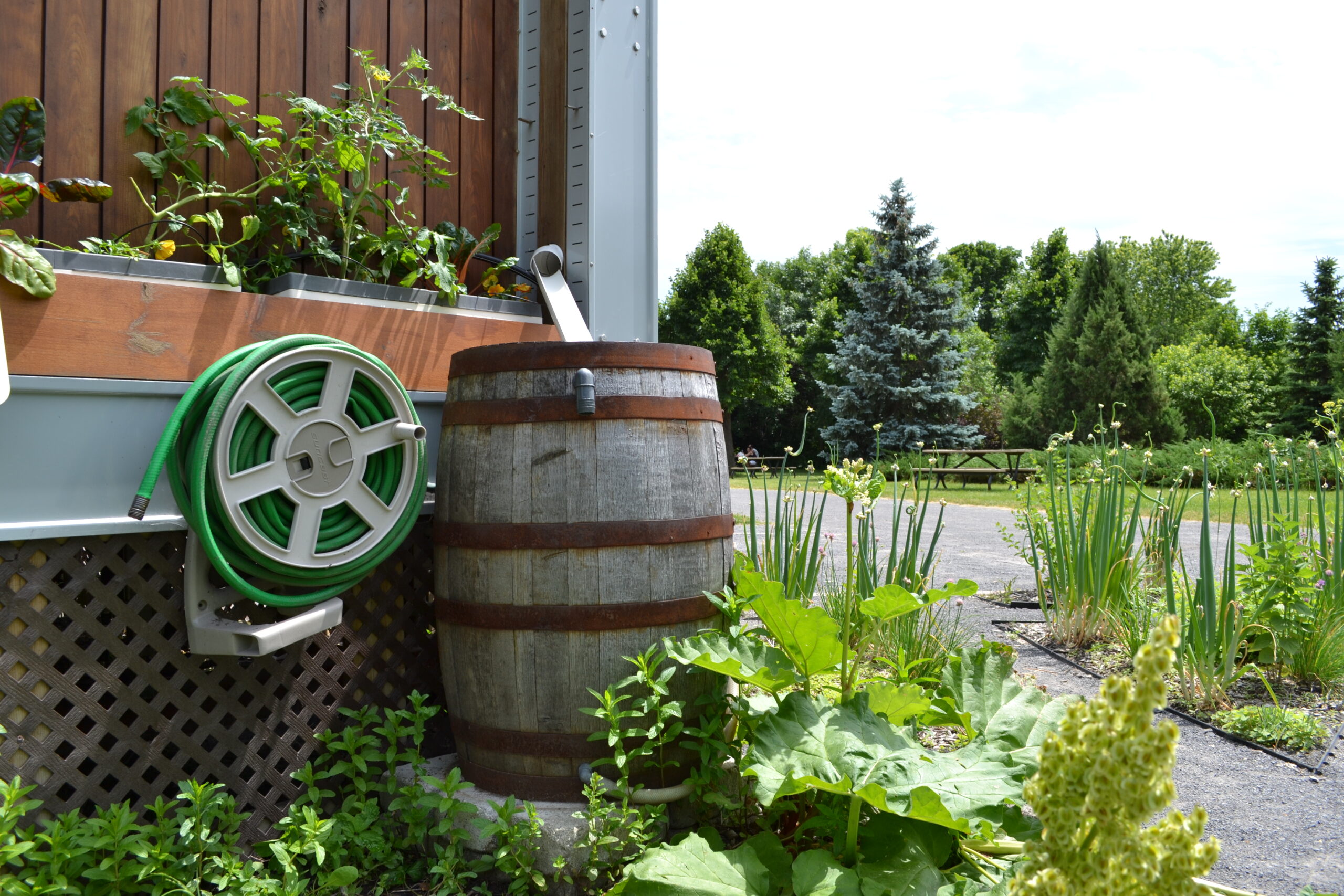
As people look to reduce their water use for environmental and ecological reasons, rain barrels have gained popularity for catching rainwater that can be stored and used for irrigation. These green infrastructure tools can conserve hundreds of gallons of water per year and reduce stormwater runoff. However, as a source of standing water, improperly maintained rain barrels may also be comfortable homes for juvenile mosquitoes.
In their new paper, published in the Journal of Medical Entomology, researchers at the University of Illinois surveyed residential rain barrels around Champaign County to determine how often mosquitoes took up residence in rain barrels and what preventative measures would most effectively keep mosquitoes out.
Not only are mosquitoes annoying, they are also vectors of many dangerous diseases, such as West Nile virus. These mosquito-borne diseases continue to pose a threat to public health in part because of the prevalence of human-made mosquito habitat in urban and residential areas. Juvenile mosquitoes require standing water to develop in, and some of these water sources come from our own backyards.
“Rain barrels are an excellent tool for homeowners to help in reducing water use,” said Brian Allan, Principal Investigator on the study and Professor of Entomology at the University of Illinois. “But they hadn’t been carefully evaluated yet as a potential habitat for mosquitoes.”
Although other forms of green stormwater infrastructure such as rain gardens and infiltration catch basins may reduce mosquito presence, the Illinois research team hypothesized that rain barrels could serve as habitat for mosquitoes.

This hypothesis was supported when their residential survey of 115 rain barrels at 53 households around Champaign County between June and September 2016 found that over half of the households had at least one mosquito-positive rain barrel.
The survey collected information about each of the rain barrels, including the types of mosquito prevention techniques they used, if any. The researchers’ statistical analysis revealed that mosquitoes were less likely to be found in rain barrels that had a mesh covering over the lid of the barrel, which helps physically keep mosquitoes out. In addition, many vector control specialists recommend treating container habitats with approved mosquito prevention methods, such as the bacterial insecticide Bacillus thuringiensis israelensis (Bti), chlorine, or even predators of mosquito larvae such as goldfish. Analysis of the researchers’ survey results indicated that these three water treatment methods were also effective forms of mosquito prevention.
Along with the rain barrels themselves, the researchers also surveyed the homeowners’ knowledge of best practices for mosquito prevention. While most homeowners could identify short-term mosquito prevention methods such as dumping out water from their rain barrels, few were aware of long-term methods of prevention such as utilizing a mesh covering or an insecticide.
“Our findings confirmed that there are simple solutions for reducing mosquito habitat, though these solutions require homeowner education and compliance,” said Becky Cloud, first author on the paper and graduate student in the Program in Ecology, Evolution & Conservation Biology (PEEC) in the School of Integrative Biology at the University of Illinois.
It is crucial that current and future rain barrel owners are empowered to take the proper precautions to prevent mosquitoes from spawning in their barrels, which will mitigate both the nuisance of mosquito bites and the risk of vector-borne disease spread. Accessible community outreach programs held by educational institutions, public health districts, and mosquito abatement districts have the potential to play a crucial role in preparing homeowners to take appropriate steps to mosquito-proof their rain barrels.
Taking these preventative measures will reduce potential health risks and ensure that rain barrels remain a safe, effective, and environmentally sustainable tool for managing stormwater runoff.
